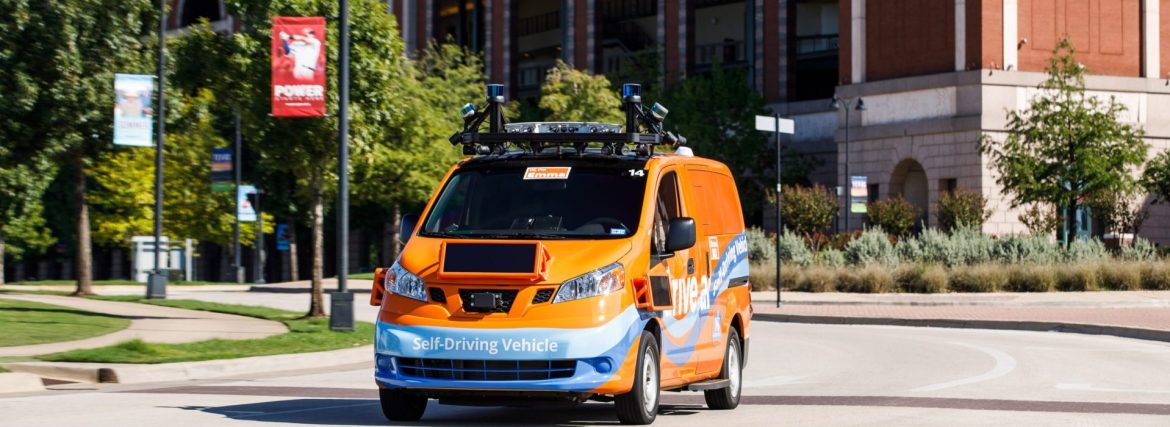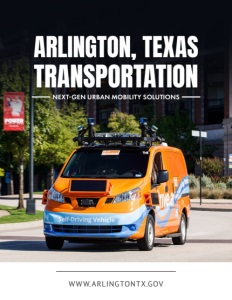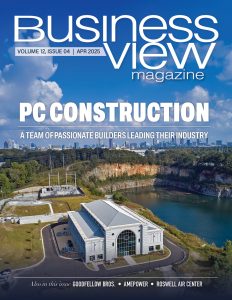Next-Gen Urban Mobility Solutions
Tech-driven focus leads to a progressive route forward
The technology revolution has touched all sectors and is driving change. At the innovation steering wheel the City of Arlington, Texas, is reshaping urban mobility, focusing on efficiency, accessibility, and sustainability.
Guided by the leadership of Alicia Winkelblech, Transportation Director, the city has adopted a technology-driven approach to enhance public transportation for residents and visitors. Since stepping into her role, Winkelblech has been instrumental in developing Arlington’s transit strategy, overseeing initiatives that address both immediate needs and long-term goals.
On-demand rideshare and specialized services
Leading the way in Arlington’s transportation network is its city-wide on-demand rideshare program. Introduced in 2017, this service remains the city’s primary public transit solution, revolutionizing how residents and visitors move throughout the city. Winkelblech explains, “Riders download an app, set up an account, and book a ride based on where they are and where they need to go. Generally, wait times range from five to twenty minutes, depending on location and time of day.” Unlike traditional fixed-route bus systems, this service offers unparalleled flexibility, ensuring riders are picked up near their location without the need to reach a designated bus stop.
This innovative program covers all 99 square miles of the city and is vital to broader transit networks. Riders can seamlessly connect to the TRE commuter rail station and Fort Worth’s Trinity Metro bus system, expanding their travel options beyond Arlington. The service operates with a fleet of minivans, providing a more personalized transit experience. “Because we don’t rely on a fixed schedule, riders have the convenience of booking a trip at their preferred time, making public transportation more accessible and responsive to individual needs,” Winkelblech adds.
Expanding access and inclusion
Arlington has seen substantial ridership growth since the program’s inception, with word-of-mouth playing a significant role in its expansion. Without an extensive marketing push, residents have embraced the service as an effective alternative to personal vehicles, particularly in a city built around suburban development. The adaptability of the rideshare model has positioned Arlington as a leader in on-demand transit, serving as a model for other municipalities exploring innovative mobility solutions.
In addition to the general rideshare service, Arlington operates Handitran, a program catering to elderly and disabled residents. “Handitran utilizes a mix of buses and contracted drivers to provide services within the city and up to a mile and a half outside city limits,” says Winkelblech. Unlike the standard on-demand rideshare, Handitran accommodates riders with mobility challenges by offering accessible vehicles and trained drivers to ensure safe and comfortable transport.
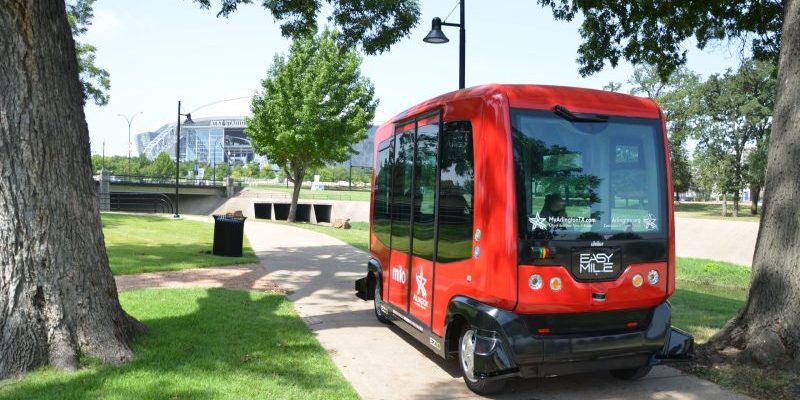
This program not only enhances mobility for elderly and disabled residents but also provides them with a greater sense of independence. Many participants rely on Handitran for essential trips, such as medical appointments, grocery shopping, and social outings. By integrating this specialized service into Arlington’s broader transit framework, the city ensures that its commitment to accessibility extends to all demographics, reinforcing its mission to offer inclusive and equitable transportation solutions.
The Connect Arlington framework
Arlington’s transit philosophy extends beyond immediate solutions. The Connect Arlington framework, developed by a transportation advisory committee in 2017, serves as the city’s blueprint for long-term mobility planning. “We designed this framework with a layered approach,” Winkelblech explains. “It focuses on efficiency, scalability, and leveraging new technologies without tying ourselves to outdated transportation models.”
The city anticipates adding fixed-route solutions along key corridors in the future. However, unlike traditional bus systems, Arlington envisions a more dynamic approach, possibly incorporating autonomous people movers capable of navigating complex urban landscapes. “We want flexibility,” says Winkelblech. “Instead of relying on legacy transit modes, we’re keeping an open mind about innovations that could provide better, more cost-effective mobility solutions.”
RAPID program success
One of Arlington’s most notable advancements is its investment in autonomous vehicle technology. The city has operated RAPID, an autonomous vehicle service covering the University of Texas at Arlington (UTA) and the downtown area, for the past three years. The project, funded through grants and developed in partnership with VIA Transportation and May Mobility, allows residents to experience self-driving technology firsthand. “We wanted to allow the community to engage with and get comfortable with autonomous vehicles,” says Winkelblech. “At the same time, we’re analyzing the challenges and opportunities these technologies present for our transit system.” The program celebrated its 100,000th ride in February 2025, a milestone that underscores its growing acceptance.
A pioneering effort in Arlington’s transit innovation is a Department of Energy-funded project that leverages drones and ground-based robots to deliver food to low-income residents. “We’re using this program to test the practical applications of these technologies,” Winkelblech notes. “It’s about exploring use cases and determining how they can be integrated into future mobility strategies.
Enhancing regional connectivity
Arlington’s commitment to regional connectivity is evident in its participation in the long-term development of a high-speed rail corridor linking Fort Worth, Arlington, and Dallas. This ambitious initiative enhances regional mobility, offering residents and commuters a faster, more efficient alternative to road travel.
“We’ve been actively engaged in the planning process alongside the North Central Texas Council of Governments and our regional partners,” Winkelblech says. “The project is still in the environmental review phase, but once operational, it will serve as a vital component of our integrated transportation network.”
The city has been working closely with other stakeholders to determine the most effective station locations, optimize route alignments, and navigate the complexities of securing funding and approvals. The rail corridor is envisioned as a game-changer, reducing congestion, providing an eco-friendly transit option, and reinforcing Arlington’s position as a key transportation hub in the Dallas- Fort Worth metroplex. While there is still a long road ahead in terms of implementation, the commitment to making high-speed rail a reality reflects Arlington’s dedication to regional cooperation and long-term mobility planning.
The future takes flight
Perhaps the most futuristic endeavor on Arlington’s horizon is its preparation for electric vertical takeoff and landing (eVTOL) aircraft—commonly called air taxis. With the 2026 FIFA World Cup set to bring global attention to the region, Arlington is working to establish the necessary infrastructure for this cutting-edge transportation mode. “We are developing infrastructure at our municipal airport to support eVTOL operations, including charging, loading, and takeoff facilities,” says Winkelblech. Additionally, the city plans to construct a vertiport in the entertainment district to accommodate short-distance air travel for visitors.
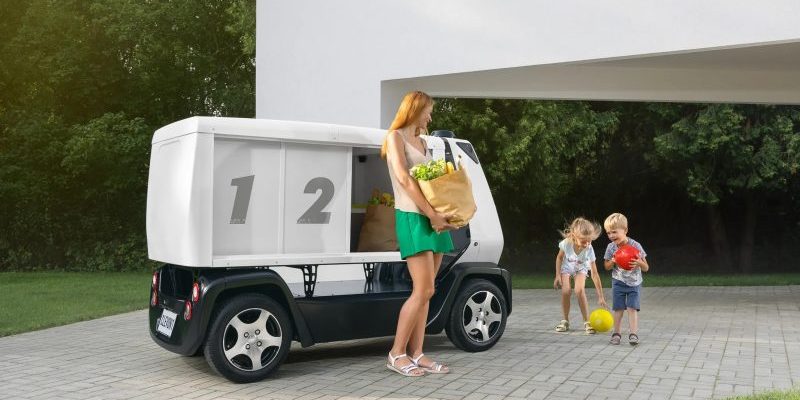
Though the industry is still evolving, Arlington is positioning itself as a leader. “We don’t want to get too far ahead of the industry, but we’re ensuring that Arlington is prepared when eVTOL technology is ready for widespread adoption,” Winkelblech explains. The city monitors FAA certification processes and collaborates with manufacturers to align infrastructure with future vehicle specifications. “We may initially see cargo applications before passenger flights,” she adds, “but the cost-effectiveness of eVTOL is improving. Our goal is to integrate it seamlessly into the broader transportation network.”
Changing Public Perceptions
Despite its many innovations, Arlington still faces the challenge of overcoming the cultural preference for personal vehicles, a common issue in Texas. “Our region is highly suburban and spread out, making traditional public transit less viable,” says Winkelblech. “People aren’t likely to drive to a bus stop just to take a bus, but they will use a service that picks them up closer to home.”
Arlington has successfully bridged the private and public transit gap by offering on-demand rideshare services instead of fixed bus routes. “When you let riders dictate their schedules, rather than forcing them to conform to rigid timetables, you increase comfort and convenience,” Winkelblech explains. As a result, the city has seen significant organic growth in ridership without needing aggressive marketing campaigns.
Sustainability and financial viability
Sustainability remains a key pillar of Arlington’s transportation initiatives. “We’ve reached a point where our core services—the rideshare program and Handitran—are financially sustainable,” Winkelblech states. “They are partially funded through federal transit grants, with the remainder covered by city funds already built into our base budget.”
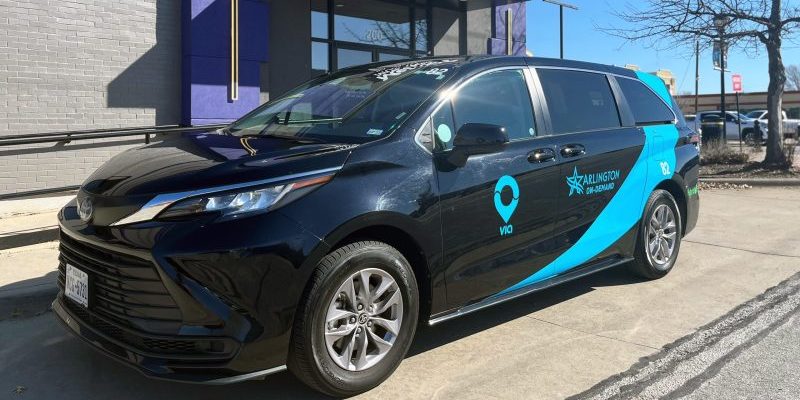
However, newer, more experimental projects present financial challenges. “We often launch grant-funded pilot programs, but if those programs can’t demonstrate financial viability post-grant, they aren’t feasible for long-term implementation,” she admits. The city is banking on industry advancements to drive down costs, making innovative transit solutions more accessible and sustainable in the future.
A new model for public transit
One of the most exciting upcoming initiatives is the Arlington Express, a hybrid transit model blending on-demand rideshare with fixed-route service. “We’re launching a pilot program connecting the Centerport TRE commuter rail station to downtown Arlington and UTA,” says Winkelblech. This service will operate during peak commuting hours, using slightly larger vehicles with scheduled departures, allowing for a more efficient transit experience. “We believe this is the first time such a model has been tested in the U.S.,” she adds. “If successful, it could set a precedent for other cities facing similar transit challenges.”
“Our focus is on providing mobility options that are efficient, cost-effective, and tailored to the evolving needs of our residents,” Winkelblech concludes. “We’re not just planning for the future—we’re actively shaping it.”
AT A GLANCE
Who: City of Arlington, Texas, Transportation Department
What: Municipality in the North Central region of Texas
Where: Arlington, Texas
Website: www.arlingtontx.gov
PREFERRED VENDORS/PARTNERS

Airspace Link provides cities and businesses with comprehensive drone operations management solutions through its industry-leading AirHub® Portal platform. As an FAA-approved B4UFLY provider, Airspace Link enables safe, compliant enterprise drone operations by integrating work order management, resource tracking, real-time flight monitoring, and complete visibility of airspace activities.
Airspacelink: www.airspacelink.com
